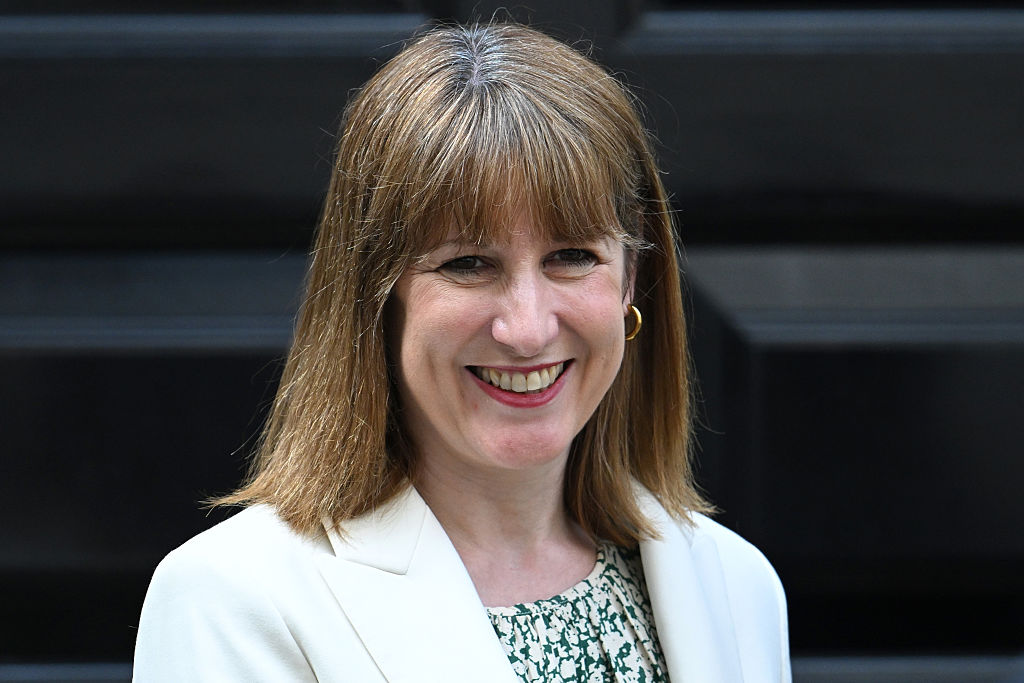Reeves expected to review pension contribution rates in Mansion House shake-up
Chancellor Rachel Reeves is expected to kickstart her long-awaited pensions adequacy review, which could involve increasing workplace contribution rates above 8%


Chancellor Rachel Reeves is expected to announce a pensions shake-up when she delivers her Mansion House speech on 15 July.
This could include reviewing how much companies and their staff contribute to their workplace pension, according to the Financial Times.
Under auto-enrolment rules, a minimum of 8% of an employee’s earnings is put into their pension, with at least 3% being contributed by the employer. Many believe this is not enough to secure an adequate retirement.
MoneyWeek
Subscribe to MoneyWeek today and get your first six magazine issues absolutely FREE

Sign up to Money Morning
Don't miss the latest investment and personal finances news, market analysis, plus money-saving tips with our free twice-daily newsletter
Don't miss the latest investment and personal finances news, market analysis, plus money-saving tips with our free twice-daily newsletter
Reeves is expected to appoint a commission to lead her long-awaited pensions adequacy review, which was originally supposed to launch last year. As well as workplace contribution rates, the review is expected to look at the state pension and how self-employed people save for retirement.
A separate pensions review from the Institute for Fiscal Studies (IFS) recently concluded that decisive action is needed to create a pension system that works for the next generation.
The think tank’s recommendations included eventually ditching the triple lock; promising to never means-test the state pension; and increasing workplace pension contributions, in particular for those with above-average earnings.
“A myriad of studies reveal the cold, hard truth that millions of people are set to reach retirement with inadequate defined contribution savings and urgent reform is needed to avoid this ticking time bomb,” said Damon Hopkins, head of DC workplace savings at consultancy Broadstone.
“The minimum contribution rate by an employer in the UK has been set at 3% since 2019. By comparison, Australia has just increased the minimum employer contribution rate to 12% – so this review seems overdue.”
Hopkins called Reeves’s rumoured pension shake-up “great news”, but added that higher contribution levels could create challenges for businesses given the additional cost.
Any increase to minimum contribution levels is unlikely to be implemented in the short term, given that companies have already had to swallow higher National Insurance contributions and an increase to the National Living Wage this year.
“The chancellor will need to strike a careful balance between introducing measures which help the long-term financial security of workers and the impact any additional costs will have on employers and the wider economy,” Hopkins said.
In a speech on 2 July, pensions minister Torsten Bell confirmed that auto-enrolment rates would not rise during this Parliament, suggesting any changes could take a longer-term view.
The Treasury declined to comment.
Will the government reform the state pension?
The government’s pension adequacy review is also expected to look at the state pension, which has spiralled in cost in recent years thanks to the triple lock. This increases payments each year in line with inflation, wage growth, or by 2.5% – whichever is highest.
The government has promised to safeguard the triple lock during this Parliament, but a question mark still lingers over its future beyond that point. The state pension cost the government more than £124 billion in 2023/24 – just under half the total amount it spent on benefits.
The full new state pension now comes to £11,973 per year, and is getting closer to the £12,570 personal allowance with each year that passes. This means pensioners could soon face a scenario where they pay tax on their state pension.
The IFS has recommended scrapping the triple lock in favour of a system where payments increase in line with inflation or wage growth, whichever is highest.
As this would be a politically-challenging move, the think tank has suggested doing it after the state pension has hit a certain target level, rather than introducing the policy immediately.
The government may also consider increasing the state pension age to manage rising costs as people live longer. State pension age is currently 66, but it is due to go up a couple of times over the next twenty years, rising to 67 between 2026 and 2028, and again to 68 between 2044 and 2046.
Any increase would be unpopular and could also raise questions about fitness to work. The latest figures from the Office for National Statistics show that men in England can only expect to spend 61.5 years of their life in good health, and 61.9 for women.
This drops to 51.1 years for men living in the most deprived areas, and 50.5 for women.
How much should you contribute to your workplace pension?
While the state pension is an important part of most savers’ retirement income, it is only enough to cover basic living expenses. Most pensioners will need to supplement it with income from a private pension.
While most people contribute 8% of their earnings to their private pension while working (including employer contributions), most experts believe this is not enough for a comfortable retirement. In its review published on 2 July, the IFS recommended that the government increase this level, in particular for employees with average earnings and above.
The IFS believes targeted increases are better than a flat contribution rate for all, helping to protect those on low incomes. Increasing your pension contributions results in a reduction in take-home pay, which not everyone can afford.
For employees earning at least £10,000 per year, the IFS proposes a minimum default total contribution rate of 3% on the first £9,000 (£270), plus 10% on any earnings between £9,000 and £90,000.
This means for a worker on £35,000 a year, the contribution would increase by about £570 per year, from £2,300 to £2,870.
A separate report from financial services company Scottish Widows recently found that two-fifths of people in the UK are not on track for a minimum lifestyle in retirement, with over 15 million people at risk of retirement poverty.
As a rule of thumb, Scottish Widows recommends saving 12-15% of your salary into your pension to secure a comfortable retirement (your contributions plus employer contributions).
Get the latest financial news, insights and expert analysis from our award-winning MoneyWeek team, to help you understand what really matters when it comes to your finances.
Katie has a background in investment writing and is interested in everything to do with personal finance, politics, and investing. She previously worked at MoneyWeek and Invesco.
-
 ‘Why I have ditched my Help to Buy ISA for cash savings and the stock market’
‘Why I have ditched my Help to Buy ISA for cash savings and the stock market’Without the 25% bonus, my Help to Buy ISA is effectively redundant, says MoneyWeek writer Sam Walker.
-
 Is your inheritance tax allowance cut if you sell to downsize or sell your home to pay for care?
Is your inheritance tax allowance cut if you sell to downsize or sell your home to pay for care?Downsizing relief is a little-known benefit that could save your loved ones tens of thousands of pounds in inheritance tax after you’ve died.
